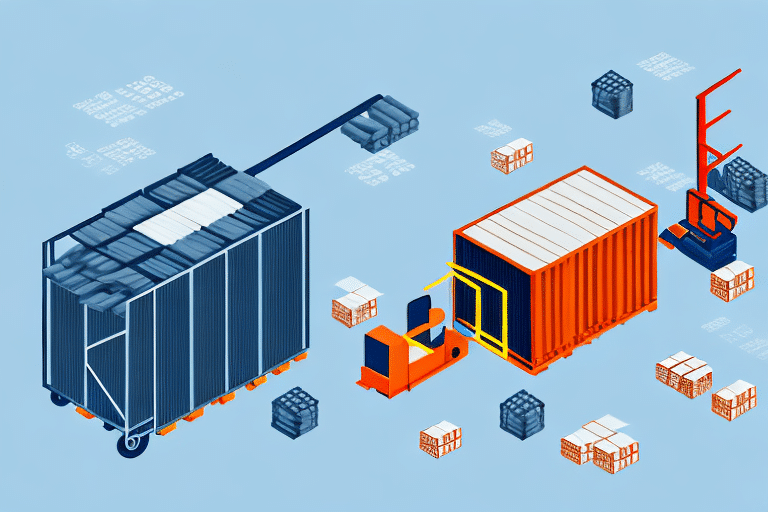Introduction to Third-Party Logistics (3PL)
Third-party logistics (3PL) providers offer specialized logistics services, including warehousing, transportation, and distribution. By outsourcing these functions, businesses can focus on their core competencies such as product development and marketing. Additionally, 3PLs can leverage economies of scale to provide cost savings through established relationships with carriers and warehouses.
Moreover, 3PLs often implement advanced technology solutions like real-time tracking and inventory management systems, enhancing supply chain visibility and operational efficiency.
Benefits of Outsourcing Logistics to a 3PL
Cost Efficiency
Partnering with a 3PL can significantly reduce costs associated with establishing and maintaining a private logistics infrastructure. 3PLs utilize their extensive networks to negotiate better rates with carriers and warehouses, passing these savings on to their clients.
Access to Expertise and Technology
3PL providers invest heavily in logistics technology and employ experts in supply chain management. This expertise ensures optimized logistics operations and provides businesses with access to cutting-edge technology without the hefty investment required to implement such systems independently.
Scalability and Flexibility
3PLs offer scalable solutions that can adjust to the fluctuating demands of a growing business. This flexibility is crucial for companies looking to expand into new markets or scale operations seasonally without the long-term commitment of in-house logistics.
Limitations of 3PLs for Long-Term Growth
Loss of Control
Outsourcing logistics means relinquishing direct control over the supply chain. This can lead to challenges in maintaining visibility and addressing issues promptly, potentially affecting customer satisfaction and operational efficiency.
Higher Long-Term Costs
While outsourcing can be cost-effective initially, costs may escalate as the business grows and logistics demands become more complex. In-house logistics, although requiring significant upfront investment, can offer greater long-term savings and cost optimization opportunities.
Customization Constraints
3PLs often follow standardized processes, which may not align perfectly with the unique needs of every business. This lack of customization can lead to inefficiencies and increased costs if businesses have to engage multiple providers to meet their specific logistics requirements.
Signs It's Time to Transition In-House
- Slow Response Times: Delays in logistics operations can hinder business growth and affect customer satisfaction.
- Supply Chain Disruptions: Frequent disruptions indicate that the current logistics solution is inadequate to handle increasing complexity.
- Product Loss or Damage: High rates of product loss or damage reflect poorly on logistics processes and can erode customer trust.
- Infrequent Communication: Poor communication with the 3PL can lead to misunderstandings and inefficiencies.
- Limited Distribution Network: A restricted distribution network can limit market reach and growth opportunities.
Additionally, if your 3PL provider is unable to offer customized solutions or support expansion into new markets, it may be time to consider bringing logistics operations in-house.
Evaluating Capacity and Scalability Needs
Assessing your business's growth trajectory is essential when deciding whether to maintain a 3PL partnership or transition to in-house logistics. Key factors include:
- Growth Rate: Rapid expansion may necessitate more control and scalability than a 3PL can provide.
- Logistics Complexity: Specialized handling requirements or international shipping can benefit from an in-house team with targeted expertise.
- Cost Analysis: Compare the long-term costs of outsourcing versus investing in internal logistics infrastructure.
For detailed insights on logistics scalability, refer to industry reports such as the Supply Chain Digital.
Developing an In-House Logistics Team
Hiring Strategies
Building a competent in-house logistics team begins with hiring professionals who possess the necessary skills and experience. Focus on recruiting individuals with expertise in supply chain management, inventory control, and transportation logistics.
Training and Development
Invest in continuous training programs to enhance the skills of your logistics team. Providing opportunities for professional growth ensures that your team remains updated with the latest industry practices and technologies.
Retention Strategies
Implement retention strategies such as competitive compensation packages, career advancement opportunities, and a positive work environment. These measures help in maintaining a motivated and loyal logistics team.
For more on effective team management, visit the Harvard Business Review.
Implementing Technology Solutions
Adopting advanced technology is crucial for optimizing in-house logistics operations. Key technology solutions include:
- Inventory Management Systems: Automate tracking and management of inventory levels to reduce errors and improve accuracy.
- Real-Time Tracking: Enhance supply chain visibility by monitoring shipments and inventory in real-time.
- Data Analytics: Utilize data analytics tools to identify trends, forecast demand, and make informed decisions.
Integrating these technologies can lead to significant improvements in efficiency and cost-effectiveness. For insights on the latest logistics technologies, refer to the McKinsey Operations Insights.
Overcoming Transition Challenges
Transitioning from a 3PL to in-house logistics involves several challenges, including:
- Initial Investment: Significant upfront costs for infrastructure, technology, and personnel.
- Operational Disruptions: Potential temporary disruptions during the transition period.
- Knowledge Gaps: Ensuring the in-house team possesses the necessary expertise to manage logistics effectively.
To mitigate these challenges, establish a detailed transition plan, maintain clear communication with all stakeholders, and provide comprehensive training to your logistics team.
For transition strategies, see resources from the Society for Human Resource Management.
Evaluating the Return on Investment (ROI)
Before making the transition to in-house logistics, it's essential to evaluate the potential return on investment (ROI). Consider both the fixed and variable costs involved, including:
- Infrastructure and technology investments
- Salaries and training for logistics personnel
- Ongoing operational costs
Compare these costs against the anticipated benefits such as:
- Reduced logistics costs
- Increased supply chain control and efficiency
- Improved customer service and satisfaction
Conducting a thorough cost-benefit analysis will help determine whether the transition aligns with your business's financial and operational goals.
For methodologies on ROI evaluation, refer to the Investopedia guide on ROI.
Conclusion: Outsourcing vs. In-House Logistics
The decision to maintain a partnership with a 3PL or transition to in-house logistics depends on your business's specific needs and growth trajectory. Outsourcing can offer immediate cost savings and access to expertise, making it ideal for businesses with simpler logistics requirements or those not ready to invest in internal infrastructure. However, as your business scales and logistics become more complex, bringing operations in-house can provide greater control, efficiency, and long-term cost benefits.
Carefully weigh the pros and cons of each option in the context of your business’s unique requirements to make an informed decision that supports sustainable growth and operational excellence.






















